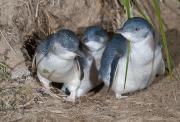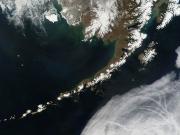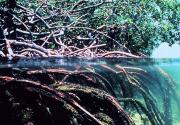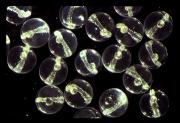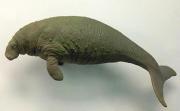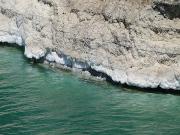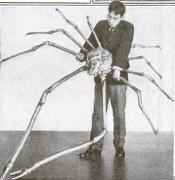Radio Program
Our regular Science and the SeaTM radio program presents marine science topics in an engaging two-minute story format. Our script writers gather ideas for the radio program from the University of Texas Marine Science Institute's researchers and from our very popular college class, Introduction to Oceanography, which we teach to hundreds of non-science majors at The University of Texas at Austin every year. Our radio programs are distributed at to commercial and public radio stations across the country.
The Humboldt squid is big, fast, and scary. It can grow up to six feet long and weigh a hundred pounds, and it swims fast enough to jet out of the water and fly for short distances. As for the “scary” part, its two tentacles are lined with suckers, each of which is ringed by sharp “teeth.” The Humboldt uses those teeth to grab prey, which it then pulls toward a sharp beak that rips the prey to shreds.
The people who named the world’s smallest penguin suffered a serious lack of imagination. They called it the little penguin, or, because it has blue feathers instead of black, the little blue penguin. Yet this little creature has some of the most interesting habits of all penguins.
The Aleutian Islands form one of the most geologically active regions in North America. The island chain, which stretches westward from Alaska, is home to two dozen active volcanoes. And since the start of the 20th century, it’s been the epicenter for more than 30 earthquakes of magnitude 7.5 or stronger.
Palm oil is one of those products that shows up just about everywhere. Not only is it used for cooking, but it’s also found in toothpaste, lipstick, ice cream, and many other household products. It’s also a growing source of biodiesel, especially in developing countries.
Hiding in plain sight isn’t easy. That’s especially true if you’re a fish swimming through the open ocean. There are no coral reefs to hide behind, no kelp beds to provide concealment. So to stay alive, a fish has to find a way to camouflage itself from both predators and prey.
Some do it with different colors. They might be dark on top and light on the bottom, to blend in with the background as seen from above and below. Others can change colors or reflect sunlight.
Like relatives who linger a little too long after the holidays, some species of whales are taking their time about leaving Arctic waters in the fall. And that could set up some unpleasant competition with other species for the goodies in the fridge.
For a young redfish, survival may depend on what its mother ate before spawning. If mama didn’t get enough essential fatty acids, then her offspring might not be able to catch food or get away from predators — even if the young consume a lot of fatty acids after they hatch.
This concept is known as metabolic programming. It says that pre-natal nutrition can have an effect on metabolism after birth. In humans, for example, there appears to be a link between a pregnant mother’s diet and a variety of health problems in children, such as diabetes, heart disease, and obesity.
In the summer of 1741, a Russian expedition was in trouble. Led by Vitus Bering, it had crossed the northern Pacific Ocean from Siberia to Alaska, and was on its way home. But after months at sea, Bering and many of his men were suffering from scurvy. When a storm hit, they were shipwrecked on an island they’d discovered a few months before.
You can barely open a cookbook or watch a show on Food Network these days without being bombarded with the virtues of sea salt. Some chefs think it tastes better than table salt, or they prefer its texture or color. And some even claim that it’s better for you than table salt.
Yet chemically, sea salt and table salt are almost identical. And they have the same origin as well — both come from minerals that settled to the bottom of the ocean or another body of water.
Most of the crabs you find scuttling along the beach are a few inches to perhaps a foot or so across. But they have some relatives off the coast of Japan that are a bit more intimidating. In fact, they’ve been described as “crabzilla.” Spread out, their legs can span 13 feet, and the crabs can weigh up to 40 pounds. Not only does that make them the largest of all crabs, it makes them the largest of all arthropods — a class of creatures that includes everything from crabs and shrimp to scorpions and spiders.


